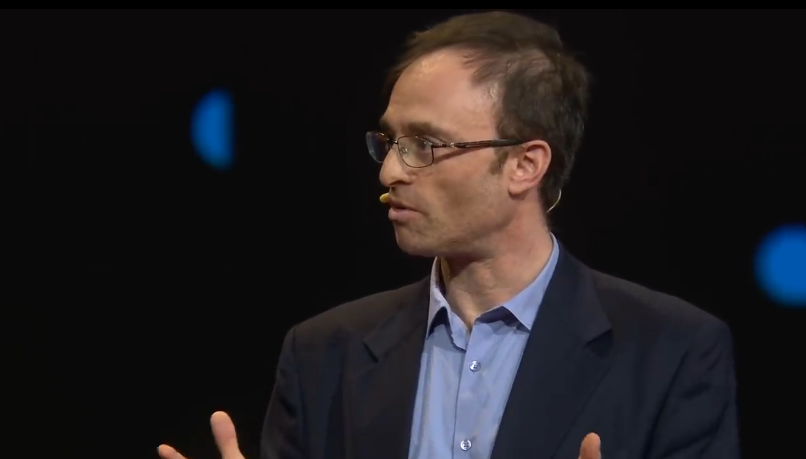A few years ago, you embarked on this mission to try and actually image one of these things.
几年前,你接受这项任务来尝试并且、构想出这些东西的样子。
And I guess you took -- you focused on this galaxy way out there. Tell us about this galaxy.
我猜——你一直在研究宇宙中的这个星系。给我们介绍一下这个星系吧。
This is the galaxy -- we're going to zoom into the galaxy M87, it's 55 million light-years away.
这就是我研究的星系。我们现在要放大M87星系,它距离我们5500万光年。
Fifty-five million. Which is a long way. And at its heart, there's a six-and-a-half-billion- solar-mass black hole.
5500万。距离非常远。在这个星系的中心,有一个相当于65亿倍太阳质量的黑洞。
That's hard for us to really fathom, right? Six and a half billion suns compressed into a single point.
对于我们而言很难准确测量其质量,对吧?65亿倍太阳质量的物质压缩在这一点。
And it's governing some of the energetics of the center of this galaxy.
并且这个黑洞掌管着这个星系中心的一部分能量。
But even though that thing is so huge, because it's so far away, to actually dream of getting an image of it,
虽然它这么大,但因为它距离地球很远,要想拍摄到它的照片,
that's incredibly hard. The resolution would be incredible that you need.
这非常困难。分辨率要求之高令人难以想象。

Black holes are the smallest objects in the known universe. But they have these outsize effects on whole galaxies.
黑洞是宇宙中已知的最小的物质。但它们对于星系整体而言有着巨大的影响。
But to see one, you would need to build a telescope as large as the Earth,
想要看到它,你需要一个像地球那么大的望远镜,
because the black hole that we're looking at gives off copious radio waves.
因为我们正在观察的这个黑洞会发出大量的无线电波。
It's emitting all the time. And that's exactly what you did.
它无时无刻不在发出这些电波。这就是你所做的事。
Exactly. What you're seeing here is we used telescopes all around the world, we synchronized them perfectly with atomic clocks,
没错。你现在所看到的是我们部署在全球的望远镜,我们让它们与原子钟完美同步,
so they received the light waves from this black hole, and then we stitched all of that data together to make an image.
让它们接收黑洞发出的光波,然后我们将所有数据拼接在一起组成黑洞的照片。
To do that the weather had to be right in all of those locations at the same time, so you could actually get a clear view.
为了达成这个目标,所有望远镜所在地的天气状况都必须达到一定条件,这样你们才能有清晰的视角。












